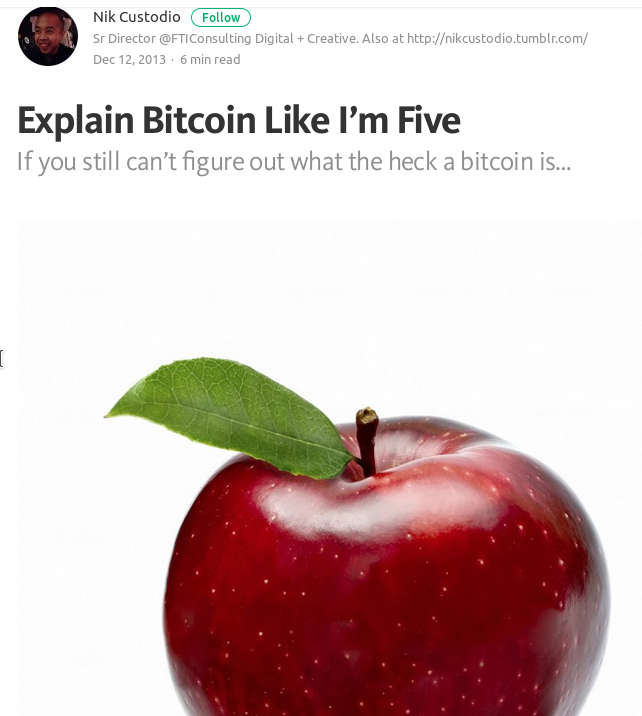Digital singularity: the techno-political design of Bitcoin
Intellectual Property / Information Technology / Media Law Discussion GroupUniversity of Edinburgh 14th november 2016
Pablo R. Velasco González
Centre for Interdisciplinary MethodologiesUniversity of Warwick
an electronic payment system based on cryptographic proof
(Nakamoto, 2008)
a purist and egalitarian creation by nature of its architecture and implementation
(Boase, 2013)
a computer software that implements a 'traditional' electronic currency and a security protocol that secures anonymous trading of it
(Karlstrøm, 2014)
a currency living in the world of computer code
(Newsweek, 2014)
a kind of Money-like Informational Commodity
(Bergstra & Weijland, 2014)
'gold without gold, money without state, credit without debt'(Bjerg, 2016)
Blockchain > Cryptocurrency > Bitcoin
Designed (scarcity)
- Distributed (non-territorial)
- Anonymous(pseudonimous)
- Cryptographic ledger

Ecosystem
-
NATIVE
- miners
- developers
-
NON-NATIVE
- markets
- venues
- institutional authorities (Governments / Banks)
- general users and social media communities

- Era of insecure comms (70's - 90's)
- Asymmetric cryptography Diffie and Hellman - 1976 (implemented in 1978 in RSA algorithm)
- Ralph Merkle hash trees - 1979
- Phil Zimmerman PGP - 1991
- Era of manifestos (90's)
A specter is haunting the modern world, the specter of crypto anarchy
(Crypto Anarchist Manifesto, 1992)We cannot expect governments, corporations, or other large, faceless organizations to grant us privacy out of their beneficence. It is to their advantage to speak of us, and we should expect that they will speak
(Cypherpunks Manifesto, 1993)- Declaration of the Independence of Cyberspace (Barlow, 1996)
"[John Gilmore] expected a guarantee -with physics and mathematics, not with laws- that we can give ourselves real privacy of personal communications" (Levi, 1996)
- Era of crypto-money (90's - ~2010)
- David Chaum - digicash -1990
- Adam Back - hashcash PoW - 1997
- Wei Dai - B-money - 1998
- Nick Szabo - bit gold 1998-2005 (1990 concept)
- Hal Finney - RPOW - 1998
- Satoshi Nakamoto - bitcoin - 2008


Genesis block
Algorithmic governance and institutional replacement
- Digital Scarcity
- Mining 'industry'
- Singularity
Algorithmic Governance

Mining 'industry'

Singularity

Regulation concerns
https://timeknows.cartodb.com/viz/00ba6572-111b-11e5-b43e-0e018d66dc29/embed_map *probable update: Immaculate Dadiso Motsi-Omoijiade (University of Warwick) Percentage of change in price and regulation stance by country during the peak of the bubble
Percentage of change in price and regulation stance by country during the peak of the bubble
"There is no way to kill this technology, we can only criminalize people for using it"(Lawrence Lessing, talking about torrenting and p2p filesharing)
"Yes, but we can win a major battle in the arms race and gain a new territory of freedom for several years.Governments are good at cutting off the heads of a centrally controlled networks like Napster, but pure P2P networks like Gnutella and Tor seem to be holding their own"(Satoshi Nakamoto, to the comment "You will not find a solution to political problems in cryptography")
protecting critical infrastructure against cyberattacks
reducing operational costs and tracking eligibility for welfare support, while offering greater financial inclusion
transparency and traceability of how aid money is spent
creating opportunities for economic growth, bolstering SMEs and increasing employment
reducing tax fraud
Benefits
"The key message is that, by fully understanding the technology, government and the private sector can choose the design that best fits a particular purpose, balancing security and central control with the convenience and opportunity of sharing data between institutions and individuals."
In sum ...
- Dissapearance of some actors (the producer) by crypto-p2p-tech
- Control displacement from institutions to code
- Singularity of the digital asset
- Partially enabled regulation
Thank you
Pablo R. Velasco González
Centre for Interdisciplinary MethodologiesUniversity of Warwick